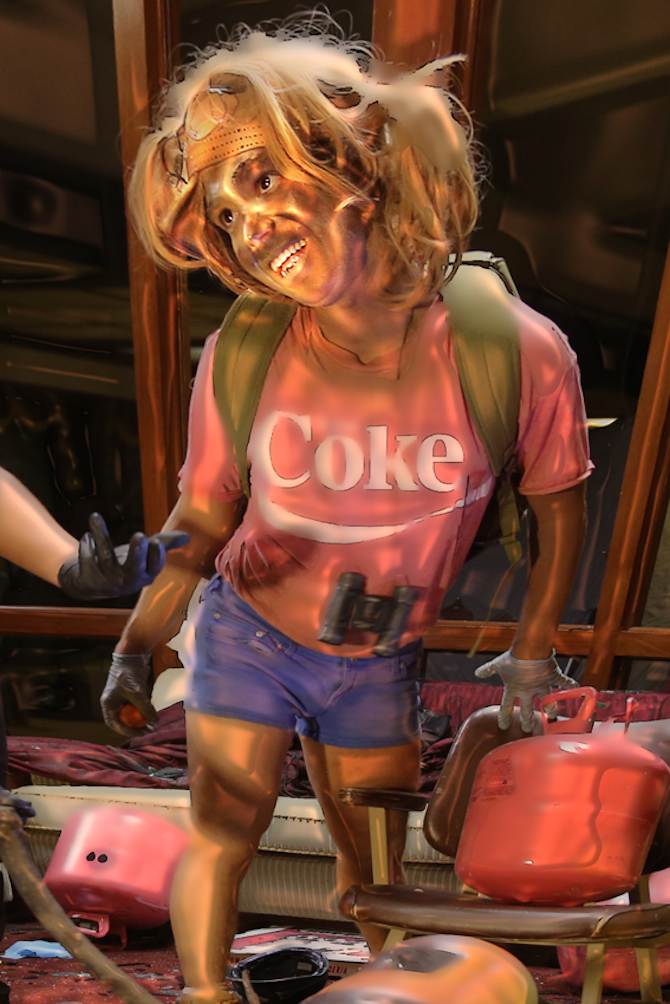
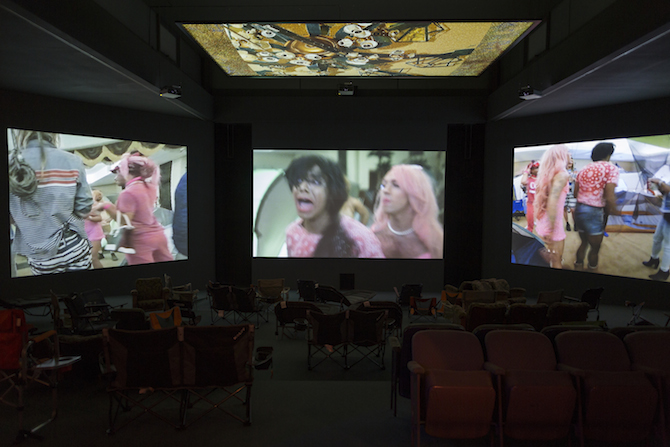
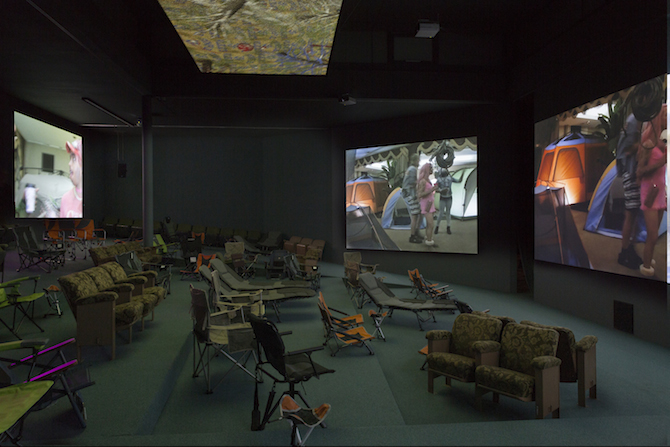
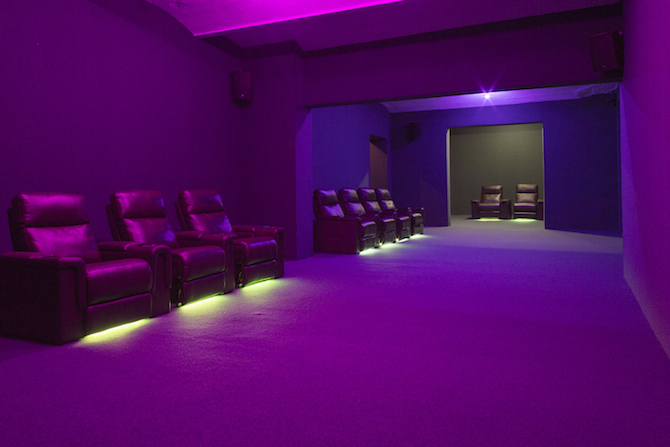 images from the top: (1) Ryan Trecartin, excerpt ANIMATION COMPANION (2014), Photo story originally published in Modern Weekly, Guangzhou; Courtesy Ryan Trecartin // (2-4) Lizzie Fitch / Ryan Trecartin SITE VISIT, 2014, Installation view, Photo: Thomas Eugster; Courtesy of the artists; both images courtesy Andrea Rosen Gallery New York; Regen Projects Los Angeles; and Sprüth Magers Berlin London.
images from the top: (1) Ryan Trecartin, excerpt ANIMATION COMPANION (2014), Photo story originally published in Modern Weekly, Guangzhou; Courtesy Ryan Trecartin // (2-4) Lizzie Fitch / Ryan Trecartin SITE VISIT, 2014, Installation view, Photo: Thomas Eugster; Courtesy of the artists; both images courtesy Andrea Rosen Gallery New York; Regen Projects Los Angeles; and Sprüth Magers Berlin London.
"You know? I mean...this is just so..." A man blabbers into a shaky hand-camera. We can't follow what he says. HipHop beats merge with his electronically amplified voice. He wears a pink lace chemise, no trousers and folded down ugg boots. His hands either play with his pink wig or they wave a petrol can about, while doing tantalizing gestures with his rouged mouth and eyes. He is a character playing in Ryan Trecartin's six-channel video work SITE VISIT, which was produced for KW Institute for Contemporary Art in Berlin. The film belongs to a series of four previous projects, which are all starred by the artist and the same group of actors. In all of these movies Trecartin's post-apocalyptic universe typically consists of guys and girls like the pink-lace one: its transgender, chaotic, loud, shallow, screeching. Its a hypnotizing outburst of digital dystopia.
The first spaces of SITE VISIT prepare visitors for what to expect afterwards: three rooms accommodate large, extendable armchairs, which are surrounded by loudspeakers, buzzing fragments of the main video-work. Squeaky voices are acoustically comprehensible, but there is not really a sense in what they say. Music is faded in and out, transforming the voices into a rap-song or electronic pop. The sedative interior is laid out to immerse visitors in the auditive spectacle: While we lie comfortably on a chair, we find ourselves immobilised and exposed to a brainwashing of technological hysteria.
Picking up the design of the video interior, which was filmed in a former Masonic temple in Los Angeles, the exhibition installation continues in a big space that absorbs the spectator entirely. Six large screens around and above camping seats and lounge chairs shower visitors with a visual mixture of 3D animation, horror-genre, hand-held cameras and Reality-TV. There is always a good portion of sexuality involved in Trecartin's films, but it comes in a form that is more alienating than seductive. Loud music modifies the entire scene into an obsessive video-clip. Where we might try to comprehend the story of the film, we are left with an infinite and disordered fragmentation of people chatting in different sets. They explore and camp inside the large building, they film and interview each other, walk from space to space. Gestures, voices and expressions are hyperbolic. The footage is extremely processed: it is sped up, then played in slow motion. Animated cats, fishes or dogs fly around the setting, reminding of a Windows 95 screen saver.
Ryan Trecartin was born in Texas in 1981 and now lives in Los Angeles. Influences from both the 80's rise of technology and American media-culture are visible in his work. Since he repetitively uses this method (i.e. at Stoschek Collection), it doesn't come as a surprise that Trecartin and his creative partner Lizzie Fitch constructed an atmosphere in the exhibition architecture that resembles the experimental behaviour-modification treatment that "A Clockwork-Orange" character Alex is exposed to: While kept in prison he has to participate in the "Ludovico Technique" – an aversion therapy in which he is forced to watch violent clips, conditioning him to suffer from witnessing brutality and to develop a sense for justice, for right and wrong.
Trecartin's aversion therapy is also closely related to what Aristotle describes as Catharsis: a cleansing and restoration of strong emotions through the effects of tragedy in art and aesthetics. Only, the tragedy in Trecartin's play doesn't follow a narrative dramaturgy, it is a tragedy of modern disidentification; of exaggerated and collapsed self-assertion. A drama, in which the characters' desperate attempts to optimise their appearance end in self-manifestations as monstrous avatars in an age of worldwideweb and selfie-culture.
SITE VISIT suggests that human individuality is exchangeable – that personality, gender and character features are eventually self-produced. The figures employ – as gender-philosopher Judith Butler has famously put it – performative strategies, in order to create their identity by means of an artificial construction of reality. But in contrast to Butler's model of reality-constituting performativity, Trecartin's characters fail to establish themselves as more than just a surface. They embody a pessimistic flip side of a future society (or a present society), suffering from a severe attention deficit hyperactivity disorder in a world that is beyond giving the possibility of being individual.
Ryan Trecartin
SITE VISIT
14.9.14 – 11.1.15
Curated by Klaus Biesenbach und Ellen Blumenstein
KW Institute for Contemporary Art -
KUNST-WERKE BERLIN
Auguststraße 69
D-10117 Berlin
Opening Hours: Wed – Mon 12–19h ; Thu 12–21h; Tuesday closed
Ryan Trecartin vimeo channel: vimeo.com/trecartin
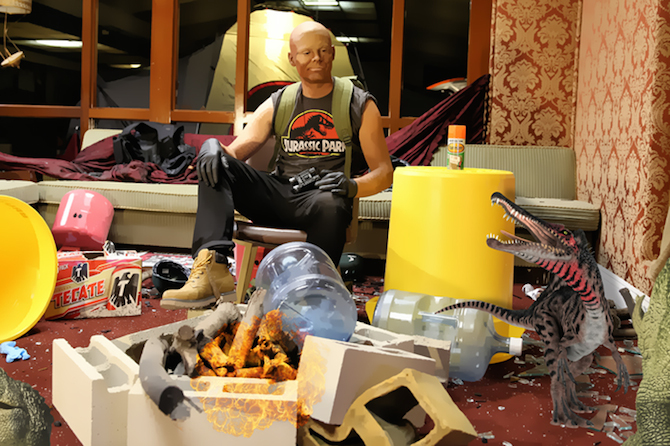
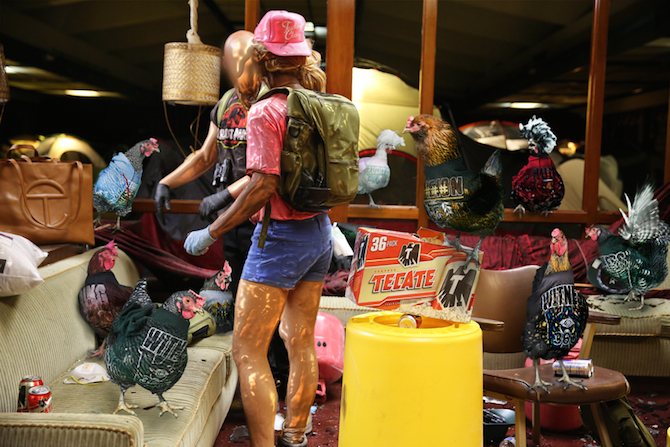
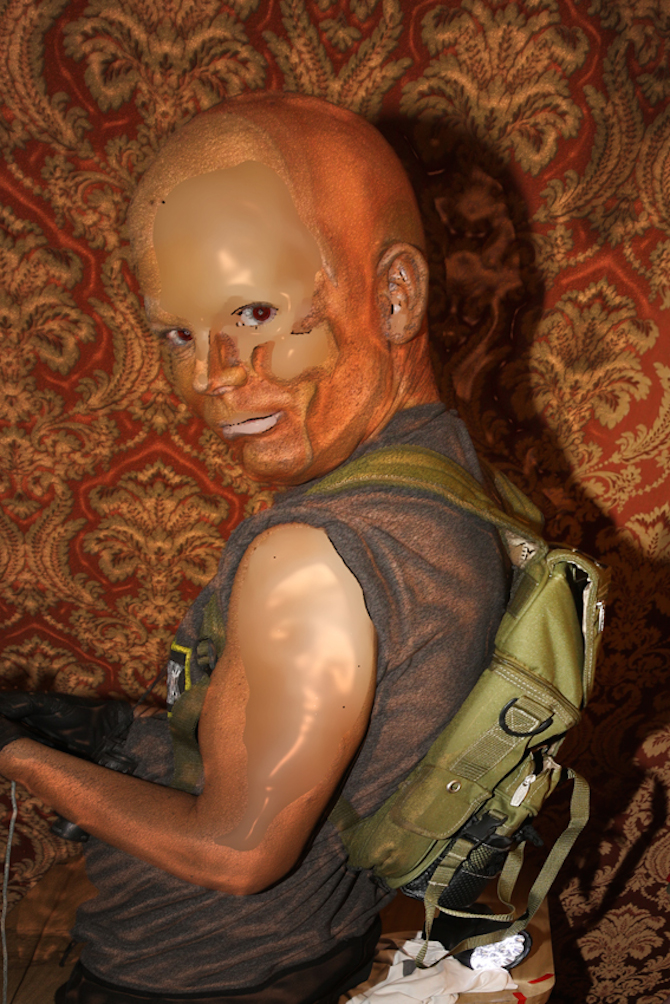
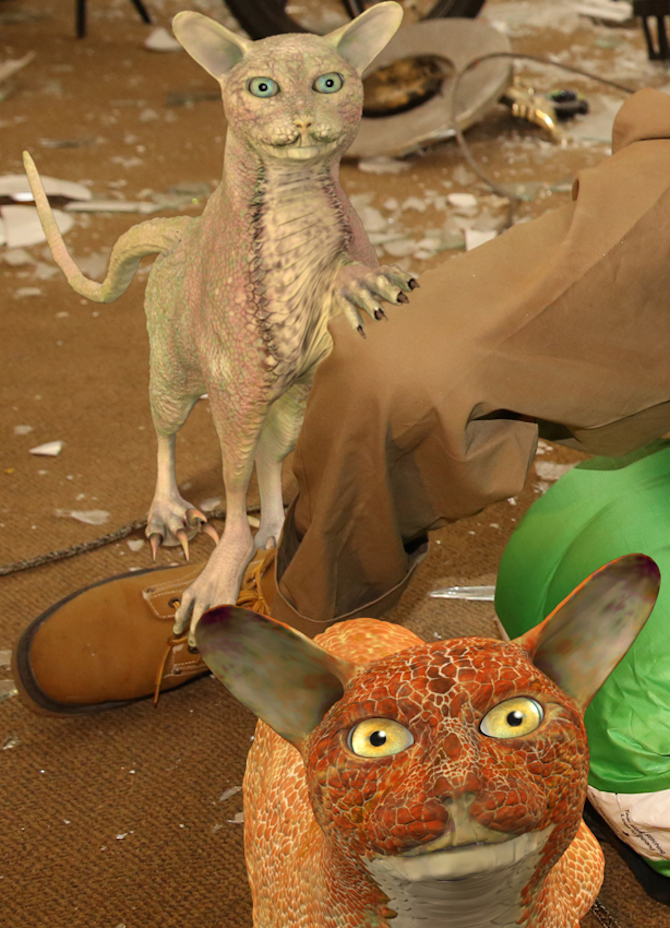
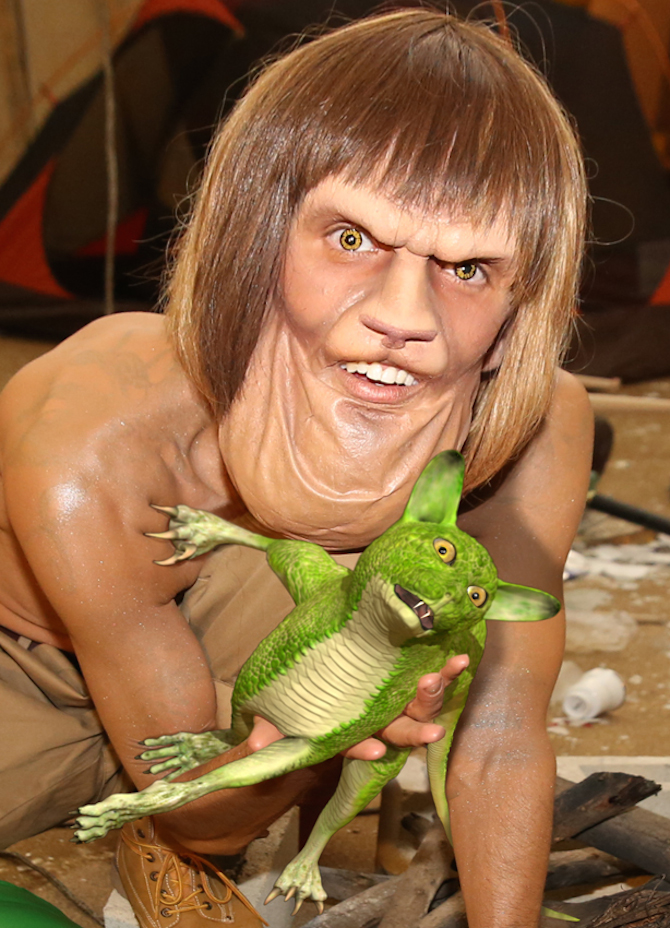
all images after the jump-break: Ryan Trecartin, excerpt ANIMATION COMPANION (2014), Photo story originally published in Modern Weekly, Guangzhou; Courtesy Ryan Trecartin; Andrea Rosen Gallery New York; Regen Projects Los Angeles; and Sprüth Magers Berlin London.
